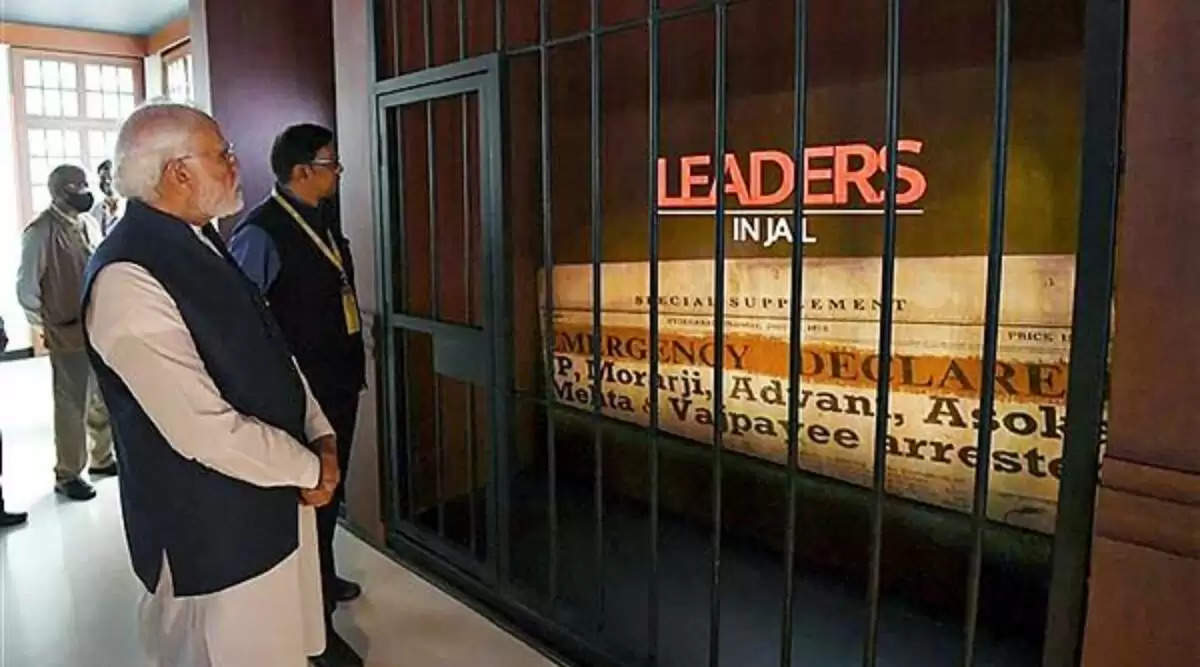From the Emergency to Ayodhya, from the 1971 war to the N-deal: India's Prime Ministers

"On the morning of December 6, 1992, activists stormed the disputed site of Lord Ram's birthplace in Ayodhya, destroying the abandoned temple." That night, (P V Narasimha) Rao imposed President's rule in Uttar Pradesh, Rajasthan, Madhya Pradesh, and Himachal Pradesh," according to a clip shown on a screen in the Prime Ministers' Museum's "challenges" section, which opened Thursday.
In two lines, the word "kar sevaks" has been substituted by "activists," and the "challenge" has been discarded. "The disagreement was eventually decided on 9 November 2019 by the unanimous judgment of the five-judge bench," the film continues. The judgment was respected by all parties involved. The Ramjanmabhoomi Nyas' claim to the title to the entire land was recognized in the ruling.
Except for that one image, the museum at the Teen Murti complex in New Delhi does a good job of capturing the historical initiatives and achievements of all Prime Ministers, from Lal Bahadur Shastri to Manmohan Singh, as well as marking key events and turning points in the country's history during their terms.
Atal Bihari Vajpayee has received a lot of accolades. Perhaps the most extensive enclosure is dedicated to him, with a section dedicated to the Pokhran testing and another to his historic visit to Lahore. The Kargil war, peace initiatives in Jammu and Kashmir, the formation of three new states, growing GDP, disinvestment, the Sarva Shiksha Abhiyan, and the Golden Quadrilateral road network are all mentioned.
On the other hand, there is a powerful depiction of Indira Gandhi's Emergency and the atrocities perpetrated during that period. To be fair, a segment is devoted to India's triumph over Pakistan in the 1971 war, which resulted in the establishment of Bangladesh, under her leadership.
The portion dedicated to Rajiv Gandhi mentions the infamous Shah Bano case, the Bhopal gas catastrophe, and the Bofors affair. His accomplishments, including the telecom and computer revolution, the Mizo peace pact, the Assam accord, the Punjab accord, and the Ganga Action Plan, all bear his name.
The clip, which includes a photograph of Shah Bano, explains the case: "A political mistake forever tarnished Rajiv Gandhi's image... Rajiv Gandhi gave up on Muslim hardliners within Congress because of fear of political implications. The Muslim Women (Protection of Rights on Divorce) Act of 1986 was approved, overturning the Supreme Court verdict and depriving Shah Bano of her meagre income."
The main Teen Murti Bhawan structure houses the museum of Jawaharlal Nehru, India's first prime minister. It hasn't been altered, but it has been updated technologically. Prime Minister Narendra Modi, speaking at the museum's opening, noted that every government in independent India has contributed to the country's current success.
Some of the events stated are still relevant today. For example, a corner of the enclosure dedicated to Shastri honors him as the father of the Green Revolution. According to a screen, the economy improved during his leadership in 1965. In January 1965, the Government of India published a circular indicating that only Hindi will be used in official communications, according to another section on the language struggle. C N Annadurai, the leader of the DMK, expressed worry that the central government's action could lead to discrimination in government posts. "A linguistic agitation sprang from this buried terror." Of course, the Tashkent Agreement of 1966 and his "Jai Jawan Jai Kisan slogan" are mentioned.
Indira Gandhi's accomplishments include abolishing the privy purse, nationalizing banks, the Nathu La battle, the Pokhran I nuclear test, and the Congress split in 1969. A comprehensive picture of the situation is found in Emergency. There is, for example, a jail with a screen on the inside. In addition, the brief video shows images of all Opposition leaders who were imprisoned during the Emergency, as well as the hardships that some of them through.
Visitors can see old television and radio sets that depict the journalistic censorship imposed during the Emergency. Sanjay Gandhi's portrait on the wall carries the words "Extra Constitutional Authority," and a small newspaper clipping with the headline "The Son Also Rises."
Rajiv is also given a significant amount of screen time. He structured his governance around five main decisions: using science and technology to improve the living standards of the poor, economic reform through a graded whittling of the protective licensing system and gradual privatization, a radical overhaul of the government by extending real administrative powers to panchayats at the bottom of the administrative pyramid, a radical consumer protection law, and institutional reforms in the polity such as banning dissent.
There's a specific section on Rao's economic reforms, the passage of the Panchayati Raj and Nagarpalika Acts, ushering in a new era in Indian television, and the rapid progress India's missile program made during his tenure. The stock market fraud and the JMM bribery case are also mentioned. "This controversy put a blemish on the Rao government," it adds after detailing the Harshad Mehta scam. A screen identifies the 1993 serial blasts in Mumbai as a difficulty he faced in addition to Ayodhya.
V P Singh and the Mandal Commission are mentioned frequently, as is his government's passage of the Prasar Bharati Bill and the National Commission for Women Act.
Singh's Aadhaar program, the establishment of the UIDAI, and the policy of Special Economic Zones are all included in the museum. It discusses citizen welfare programs but makes no explicit reference to his government's schemes or right-based efforts. The POTA repeal law, which repealed the anti-terror law enacted under the Vajpayee period, is also mentioned.
I K Gujral's Gujral doctrine, H D Deve Gowda's visit to Jammu and Kashmir, Morarji Desai's establishment of the Shah Commission, the Lokpal Bill, and the 44th Amendment all make an appearance.
.png)